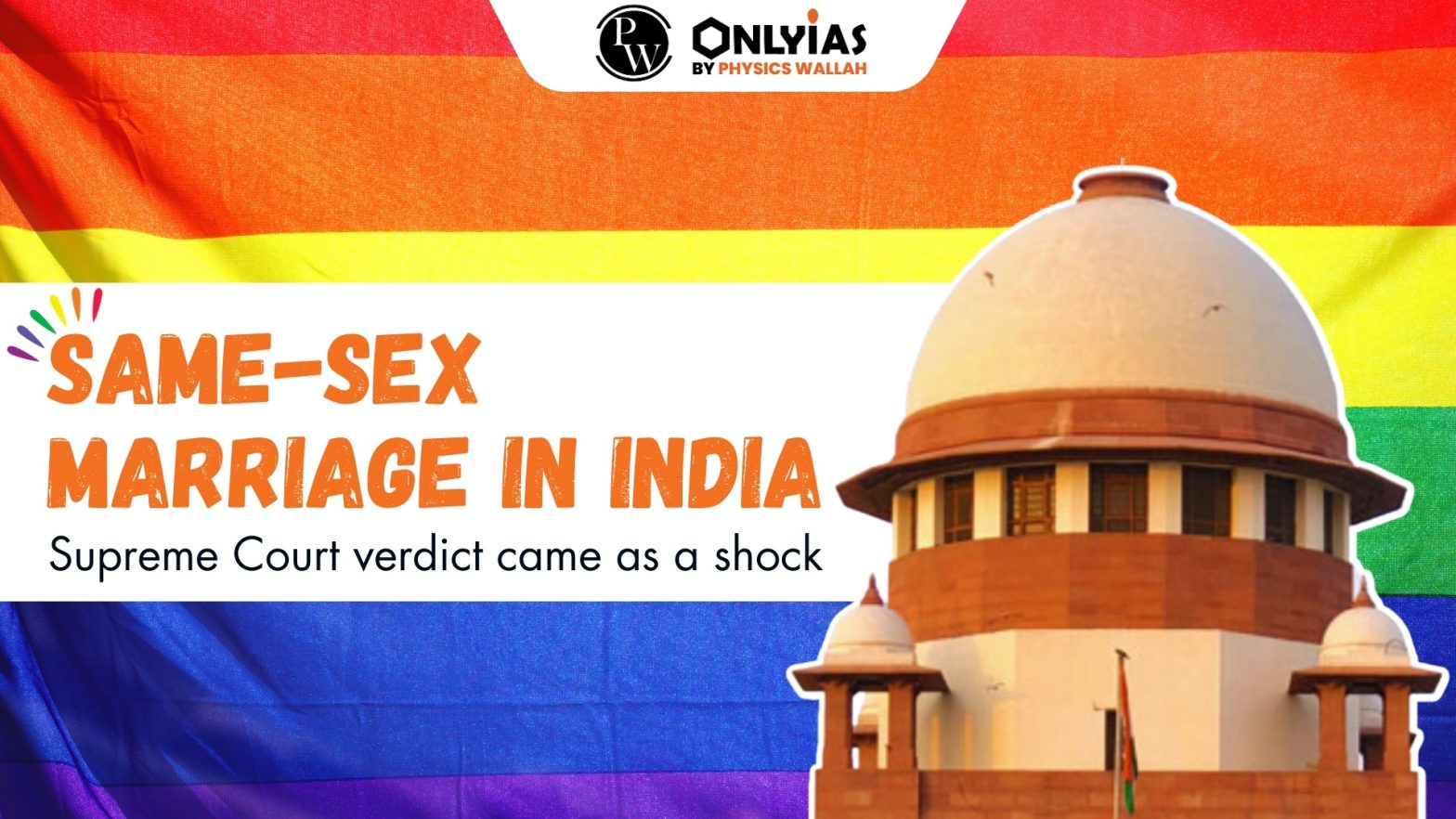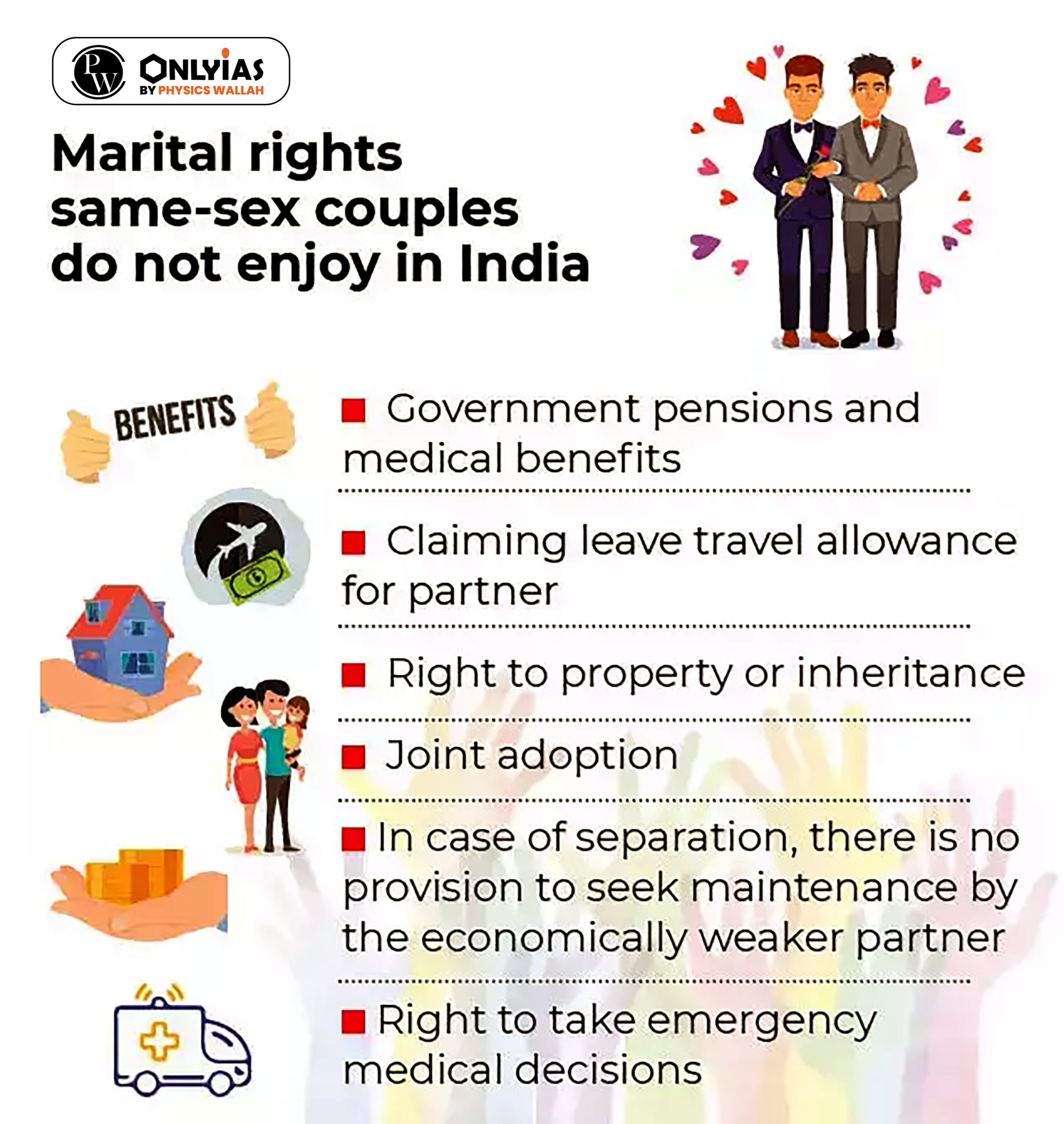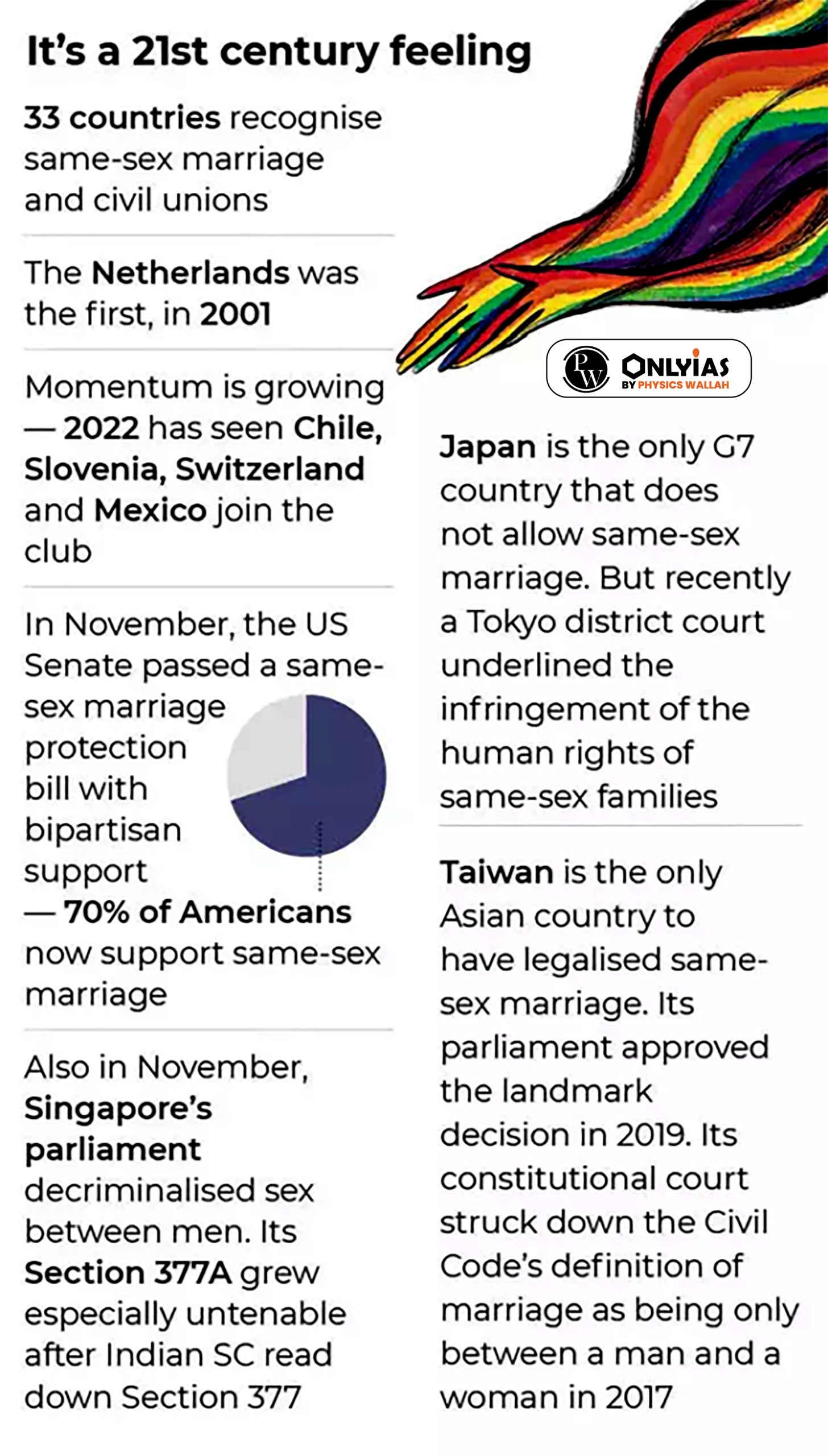Same-sex marriage in India faces legal, social, and cultural challenges. From Section 377 to the Supreme Court’s 2023 verdict, explore the timeline, debates, and LGBTQ+ rights issues, along with global perspectives shaping India’s journey toward marriage equality.

Supreme Court of India has delivered its long-awaited verdict on the issue of same-sex marriage, a matter that has sparked nationwide debates and drawn global attention. Same-sex marriage in India refers to the union between two individuals of the same gender, but unlike several countries across the world, it does not yet enjoy legal recognition under Indian law. While the LGBTQIA+ community has made significant progress over the years—from the 2001 Naz Foundation petition to the historic 2018 judgment decriminalizing homosexuality—marriage rights remain out of reach. Traditional religious groups continue to oppose same-sex marriages, citing cultural and moral grounds, and the government maintains that the authority to redefine marriage rests with Parliament, not the judiciary. Against this backdrop, the Supreme Court’s 2023 verdict, which declined to legalize same-sex marriage but emphasized protection against discrimination for queer couples, marks a critical juncture in India’s journey towards equality.
Legalizing Same Sex Marriage in India: Debates and Challenges


| Country | Law |
|---|---|
| Netherlands | The Netherlands became the first country to give Same-sex couples the legal right of marriage and adoption. |
| Canada | In 2005, Canada’s federal legislature legalized same-sex marriage. |
| South Africa | In 2006, South Africa became the first country in Africa and the first country in the Southern Hemisphere to legalize same-sex marriages. |
| Argentina | In 2010, Argentina became the first country in Latin America to legalize same-sex marriages in the country. |
| New Zealand | After received approval from the crown in 2013, New Zealand became the first country in the Asia-Pacific region to allow same-sex marriage. |
| England and Wales | After approval from the queen, same-sex marriage in England was legalized through a Parliamentary measure. |
| Ireland | Ireland legalized same-sex marriages in the country in 2015 through a popular referendum, making it the first country to legalize such marriages by popular vote. |
| United States | After a decision by the Supreme Court in 2015, protecting the rights of people in marriages, the federal government approved same-sex marriages. |
| Taiwan | Taiwan became the first Asian country to legalize same-sex marriages after the country’s Constitutional Court found a law recognizing marriage as between a man and a woman to be unconstitutional. |
| Estonia | Estonia’s parliament approved same-sex marriage in June 2023, making it the first ex-Soviet and first Baltic country to do so. |

Ready to boost your UPSC 2026 preparation? Join PW’s UPSC online courses today!
Same sex marriage in India refers to marriages between two individuals of the same gender.
The colonial-era Section 377 of the IPC criminalized homosexuality. This law was scrapped by the Supreme Court in 2018.
Currently, same sex marriage in India do not enjoy legal status in India due to rigid definition of gender in the laws. India’s laws define marriage as a union between a man and a woman.
In 2018, the Supreme Court’s constitutional bench, in Navtej Singh Johar v. Union of India judgment, decriminalized homosexuality.
The court has said that the issue of same sex marriage in India was beyond its scope and instead must be decided by the Parliament of India. However, it has ruled that same-sex couples have the right to adopt children.
The centre had cautioned that constitutional declaration made by the court on the petitions seeking legal validation for same sex marriage in India may have negative fallout. The centre also says that decisions on marriages can only be made by the Parliament.
The United States, England and Wales, New Zealand, Taiwan, Argentina, South Africa etc are some of the countries that have legalized same sex marriages.

<div class="new-fform">
</div>